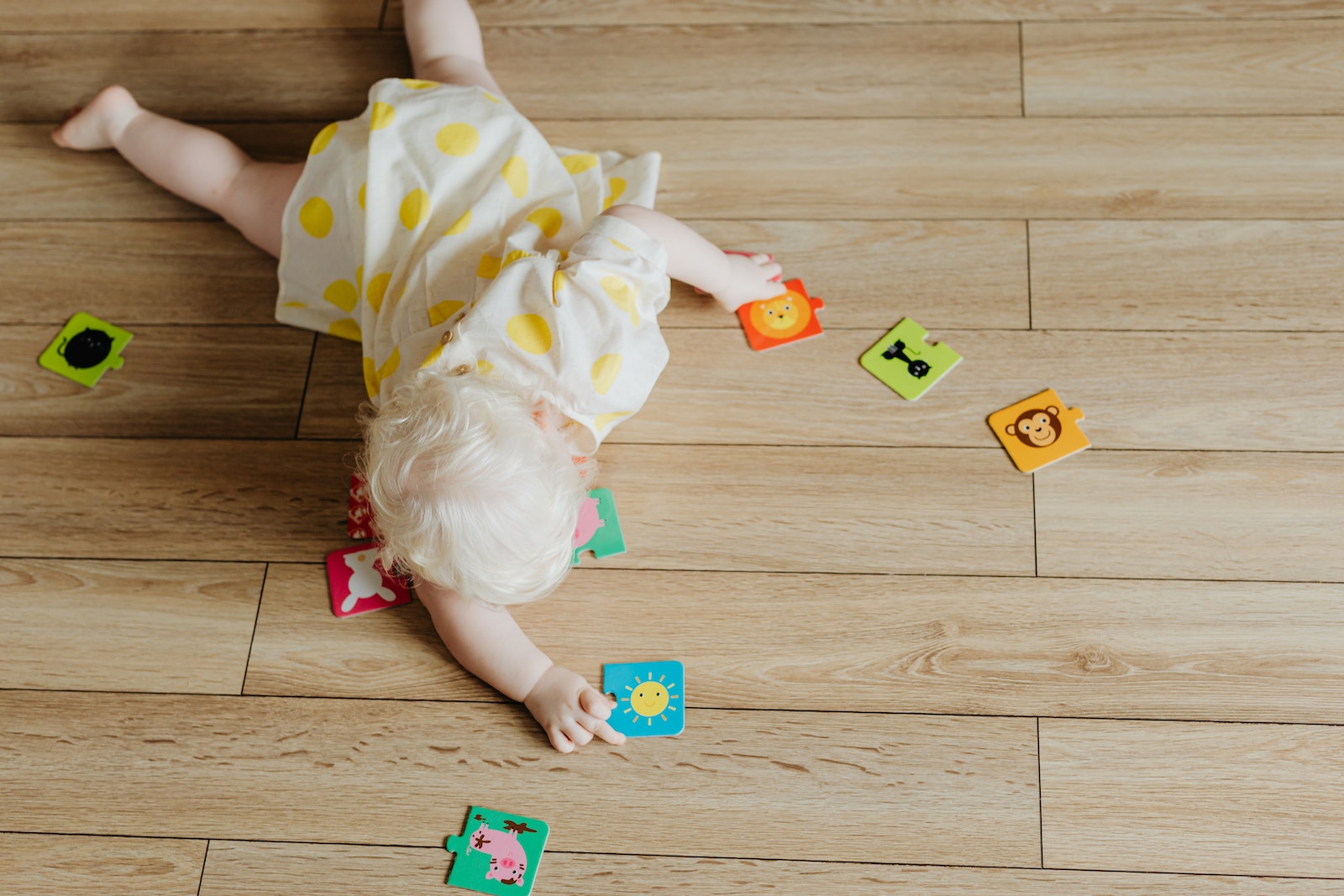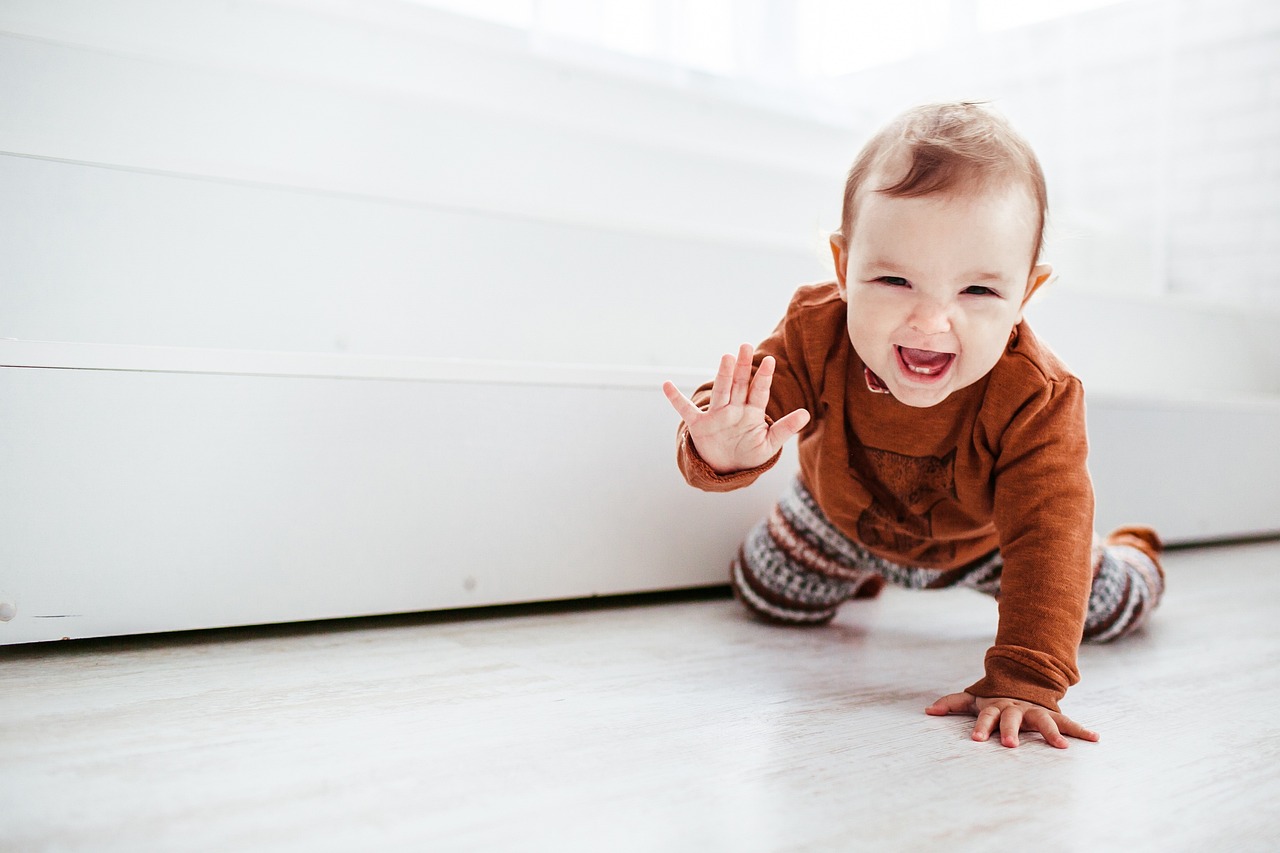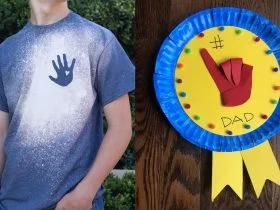Crawling is a big milestone in your baby’s life. In your life as well. Crawling is a sign your baby is finally ready to take its first steps. And if you want to know the signs baby is ready to crawl, we have you covered.
The process of learning to crawl is complex. There are things you can do to help your baby. And there are signs you need to pay attention to.
Usually, a baby starts to crawl in the second half of the first year. This is the period when most babies are starting to move. To crawl, babies need to coordinate the movement of their arms and legs, as well as develop muscle strength that will support their weight. So, be patient.
Reader's Roadmap
How Do Babies Learn To Crawl?
One thing is certain, each baby is different. Babies learn to crawl using different styles and techniques. Sometimes, their first jump forward is a scoot backward. Sometimes, before they learn how to do the arm-leg-arm-leg crawling movement, they learn how to go backward first. Here are some ways babies learn to crawl:
- The classic crawl, alternating hand on one side and knee on the other to go, go, go
- The crab, or bending one knee and extending the opposite leg to scoot
- Commando, or a crawler that lies flat on its belly and drags itself forward using only its arms
- Rolling instead of crawling
- Some children even skip crawling and go right to walking
Be patient. Your baby will make progress in its ability to use its body and get around. Here is how you can help your little one. First and foremost, you have to pay attention to signs baby is ready to crawl.
What Are The Signs That Indicate Your Baby Is Ready For Crawling?
Babies might start crawling before you know it and see it. It might happen when you are not paying attention. But there are signs that will tell you your baby is ready to crawl and might have started crawling by now. Here are those signs.
Holding Onto Different Things
When babies are ready to crawl, they try to walk around first by holding onto different things. For example, the coffee table, the sofa, and the TV cabinet. This will help them balance and move around.
When your baby is holding onto furniture in your home, it is a clear sign it is ready to crawl. Holding onto things for moving allows the baby to move around and explore the world.
Rocking Back And Forth
It looks like bouncing and dancing. Babies will rock themselves before they begin crawling. This is your baby’s way of figuring out how to get around the problem and move from Point A to Point B. So when your baby is ready to crawl, it might hold onto its knees and rock back and forth.
Pulling Up
If your baby is ready to crawl, it will try to pull itself up on objects. This is not holding for moving, it is holding for standing. It is another clear sign they are getting closer to crawling.
Pulling requires a lot of body strength. So, think of it as a big milestone in your baby’s life. Babies can also pull upon people to stand. For example, they might use you as their jungle gym. Just smile back at them and encourage their persistence.
Show Interest In Far Objects
Pay attention to what your little one is looking at. If it is an object that is far away, it is an obvious sign. You can encourage your baby to try and get to its favorite object by setting desirable objects a few feet out of reach.
Wait for your determined baby to get the toy or object.
Pulling Using Arms
We can call this movement the army crawl. Babies start crawling using their arms only. And it is a step forward to the important milestone, which is officially crawling.
Because crawling requires coordination between legs and arms, it is only logical for a baby to master the upper and lower extremities separately, and then together.
Moving On Hands And Knees
Your baby will start moving forward by crawling. They do it by holding onto different objects for support. It is another great sign that your baby is close to the process of crawling.
It is one way how your baby is more active and working those muscles.
Get Into The Crawling Position
How do babies do this? They do it by holding onto objects in the environment. They hold them with one hand while pulling forward with the other. Other positions may include tummy with feet moving, standing on hands and while pumping arms forward, moving to a crouch position, and so on.
All of these ways the baby is trying to get into the crawl position mean they are one step closer to the final goal.
Moving Feet Around
We talked about how babies might start using their arms and crawl only with arms. Well, some babies start from the lower part of the body. That means they will move their legs and feet in different ways while holding things with both hands. It helps babies master their balance.

Different Types Of Crawling
We said before that each baby is different. Some babies start from their upper body, others from their lower body. There are also different crawling styles. As a new parent, you should let your baby be free and try out all kinds of ways for moving around. Allow your baby to figure out which works best. With that in mind, here are some styles.
Cross Crawl
Basically, babies keep one arm stationary at their side and move their opposite leg and arm forward. It is a crawling style babies use to start crawling around and switch arms every time they move a hand or foot. Movements become more flexible over time.
Army Crawl
We touched on this one before. Babies will move their bodies forward by moving one arm and leg on the same side together. They start by crawling using their arms only. And then they do it one leg and one arm.
They will keep both arms extend in front of them to bring each knee toward the chest.
Bear Crawl
One of the best exercises in the gym. And babies do it as well. They move their body forward by moving one arm and leg on opposite sides of the body at a time. They can switch the side they are using every few steps.
Snake Crawl
For this crawling style, babies move their bodies forward by moving one arm and leg on each side at a time. They use both hands with either leg or arm. It depends on what feels more comfortable at the time.
Crab Crawl
For this crawling style, babies move their bodies by moving both arms and legs simultaneously. This method will also help babies lift themselves off the floor.
How To Help Your Baby Crawl?
We said in the beginning that you can help your baby during the crawling process. It is a learning experience for your little one. And it is a challenging one. You can make it easier and smoother.
- Provide plenty of tummy time, starting from birth. When babies play on their bellies, they develop muscle strength in their shoulders, arms, back, and torso. These are all muscle groups that will help your baby crawl
- Encourage your baby to reach for toys it is interested in. Be careful to place the desirable items at a distance that is reachable, but not too far away. A short distance will do it
- Remove any hazardous objects and sharp objects that can hurt your baby while using the space in the home
- Supervise your baby and make sure they have enough safe space to explore
- When your baby is on all four, place the palms of your hands behind its feet to stabilize your baby and give something to push off
What To Avoid?
Sometimes, you might have good intentions, but they deliver bad results. That applies here.
For example, you should stay away from baby walkers. They are potentially dangerous and limit practice time on the floor. They can also hamper muscle development.
Babies will be able to crawl and then walk and move around if they have plenty of time to play and explore. So, do not spend a lot of time in baby seats and baby carriers.
Last, but not least, DO NOT push your child to learn to crawl. Leave it to learn at its own pace.
What If My Baby Is Not Crawling?
Parents should encourage their newborn babies to crawl by placing them on the floor. But as a new parent or an experienced parent, you should remember that you cannot push something. Babies learn in different ways and at different times. Respect it, and allow your baby to get to the final goal.
Pay attention to the signs baby is ready to crawl. You can hinder your baby’s development by not paying attention to these signs, and by “overprotecting” your baby. What does that mean? Well, if you carry your baby around all the time, how will it learn to crawl?









Leave a Reply
View Comments